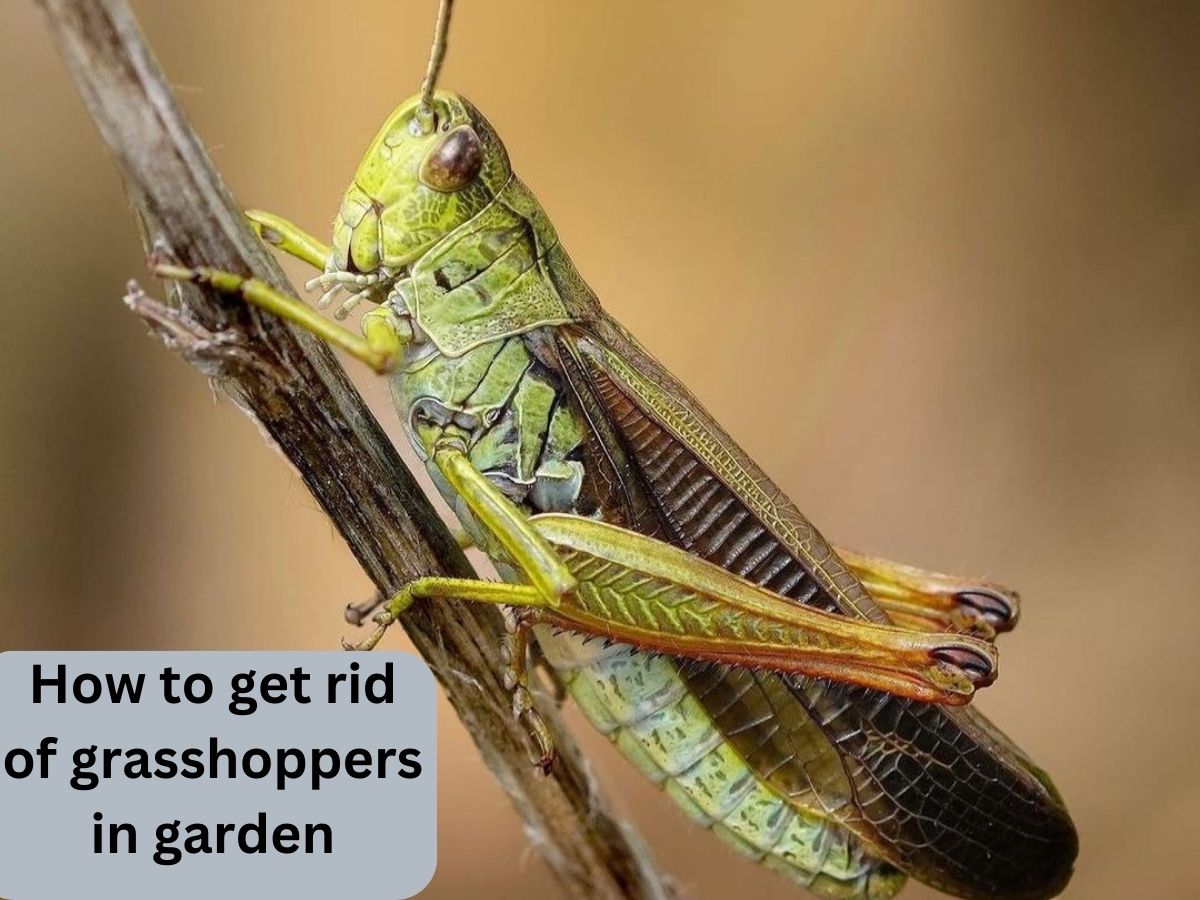Tired of watching your beautiful garden turn into a grasshopper buffet? You’re not alone; How to get rid of these grasshoppers in the garden is a question that plagues many green-thumbed enthusiasts. In this comprehensive guide, I’ll share expert insights on how to reclaim your garden from these voracious critters.
Gardening is a labor of love, a dance with nature where we nurture and coax life from the soil. But when grasshoppers descend upon your carefully tended plants, it can feel like a battle of wills. Those vibrant leaves, the promise of juicy tomatoes, and the kaleidoscope of blooms – all at the mercy of these tiny, relentless munchers.
So, let’s get to the heart of the matter: How can you bid farewell to grasshoppers and protect your garden’s splendor? The answer lies in a multi-faceted approach that blends science with a dash of artistry.
We’ll delve into the signs that pinpoint a grasshopper infestation, understanding the intricate world of grasshopper behavior, and the crucial role played by natural predators. I’ll walk you through non-chemical control methods that allow you to take a hands-on approach, and if needed, we’ll explore safe chemical alternatives as a last resort.
Prevention, of course, is the wisest strategy, and I’ll share tips on maintaining a garden environment that’s less inviting to grasshoppers. Armed with this knowledge, you can turn the tables on these garden invaders and reclaim your slice of horticultural paradise.
Identifying Grasshopper Damage
Grasshopper infestations can be a significant problem for agriculture and gardens, as these insects can quickly consume large quantities of plant material. Recognizing the signs and symptoms of a grasshopper infestation is essential for early detection and effective pest management. Here are some common signs and symptoms of grasshopper infestations:
Signs and Symptoms of Grasshopper Infestations
- Chewed Leaves and Nibbled Stems: Grasshoppers are notorious for their hearty appetite, and their feeding frenzy often results in irregular-shaped holes in leaves and partially nibbled stems. This distinctive damage pattern is a telltale sign of their presence.
- Visible Presence of Grasshoppers: The most obvious sign is the presence of numerous grasshoppers in the affected area. You may see them hopping or flying around plants and the ground.
- Damage to Crops: In agricultural settings, grasshoppers can cause significant damage to crops, leading to reduced yields or even crop failure.
- Missing Foliage: As grasshoppers continue their feast, you may notice entire sections of plants missing, leaving behind a skeletal appearance. This can be particularly devastating for vegetable gardens and ornamental plants.
- Excrement and Molted Skins: Another indicator of grasshopper activity is the presence of their excrement, which resembles tiny brown or green pellets. Additionally, you might find molted grasshopper skins, a sign that nymphs are maturing into adults.
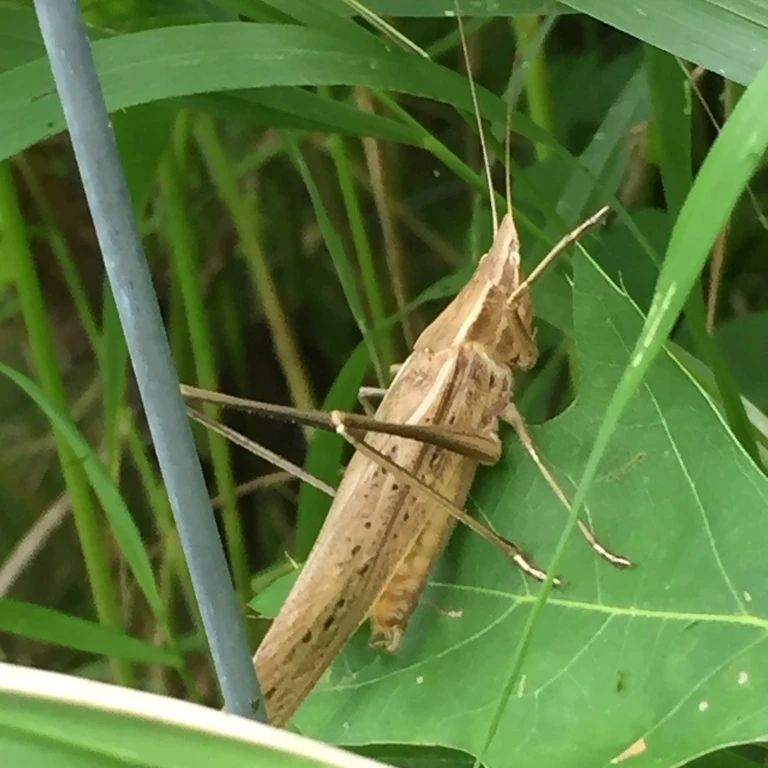
Importance of Early Detection
Early detection of a grasshopper infestation can be a game-changer for your garden’s health. Here’s why it matters:
- Prevents Rapid Population Growth: Grasshoppers reproduce quickly, and a few can turn into many in a matter of weeks. By spotting them early, you can intervene before the population explodes.
- Minimizes Damage: Addressing the issue before it escalates means less damage to your plants. Early intervention can save your precious crops and ornamentals.
- Reduces the Need for Drastic Measures: When detected late, controlling grasshoppers may require more aggressive methods, including chemical pesticides. Early detection allows for gentler, eco-friendly approaches.
To detect grasshoppers in your garden, conduct regular visual inspections, especially during their active seasons, typically late spring through summer. Look for the aforementioned signs, and don’t forget to examine the undersides of leaves and plant crevices where grasshoppers often hide during the day.
By staying vigilant and catching grasshopper infestations early, you can take proactive steps to protect your garden and maintain its beauty and productivity.
What Attracts Grasshoppers to Gardens?
Grasshoppers are attracted to gardens for several reasons:
- Plants as a Food Source: Grasshoppers are herbivores, and gardens often provide a diverse array of plants that serve as their primary food source. They are particularly drawn to succulent, leafy vegetation.
- Lush Foliage: Gardens are typically lush and green, offering an abundance of foliage for grasshoppers to feed on. The rich variety of plants can be like an all-you-can-eat buffet for them.
- Moisture: Grasshoppers are attracted to areas with moisture. Gardens that are well-watered or near water sources can be especially appealing to them.
- Warm Weather: Grasshoppers are more active in warm and sunny weather, which is common during the growing season in many gardens.
- Breeding Opportunities: Gardens may provide suitable conditions for grasshoppers to lay their eggs. The soft soil and abundant plant material can serve as breeding grounds.
- Plant Diversity: Gardens often feature a variety of plant species, which can attract different types of grasshoppers. Some grasshopper species have preferences for specific plants.
- Lack of Predators: Gardens may lack natural predators of grasshoppers, such as birds and certain insects, allowing grasshopper populations to thrive unchecked.
- Drought Conditions: Grasshopper populations can surge during drought conditions, as reduced rainfall may lead to a decline in their natural predators, making gardens even more attractive to them.
Understanding what attracts grasshoppers to gardens is essential for implementing effective prevention and control strategies to protect your plants from these voracious pests.
Why Grasshoppers Can Become a Significant Problem in Gardens
Gardens, with their lush vegetation and vibrant variety of plants, are like an all-you-can-eat buffet for grasshoppers. These seemingly harmless insects can rapidly transform into formidable garden pests for several compelling reasons:
- Rapid Reproduction: Grasshoppers are prolific reproducers. A single female grasshopper can lay hundreds of eggs in the soil. These eggs hatch into nymphs, and within a few weeks, these nymphs grow into adults, capable of causing extensive damage. This swift lifecycle means that a minor grasshopper presence can quickly escalate into a full-blown infestation.
- Voracious Appetite: Grasshoppers are herbivores with a voracious appetite for a wide range of plants. They feed on leaves, stems, flowers, and even fruits. When they gather in large numbers, their collective munching power can decimate entire plantations in a short time, leaving gardeners with little to harvest.
- Wide Range of Host Plants: Grasshoppers are not picky eaters. They will feast on a variety of plants, including vegetables, ornamentals, and field crops. This broad dietary preference means that no plant is truly safe from their depredations, making them a universal threat to gardens.
- Mobility: Grasshoppers are agile jumpers and skilled fliers. This mobility allows them to move easily from one plant to another, making it challenging to contain their spread within a garden. They can quickly colonize new areas and escape control measures.
- Drought Conditions: Grasshopper populations tend to surge during drought conditions. Reduced rainfall can lead to the decline of their natural predators, such as birds and parasitic wasps. This, in turn, allows grasshopper populations to thrive without the usual checks and balances.
Understanding why grasshoppers pose a significant threat to gardens will help you take proactive measures to protect your garden’s vitality and yield.
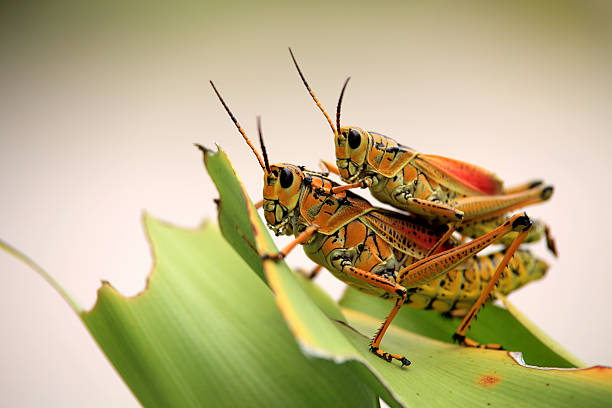
How to get rid of grasshoppers in garden
Grasshoppers can be a nuisance in gardens as they can devour plants and cause damage to your crops. Here are several methods to help get rid of grasshoppers in your garden:
Neem Oil:
How It Works: Neem oil is derived from the neem tree (Azadirachta indica) and has natural insecticidal properties. It disrupts the hormonal system of insects, including grasshoppers, interfering with their feeding and reproductive cycles.
How to Use It:
- Mixing: Dilute neem oil according to the manufacturer’s instructions. Typically, you’ll use 1 to 2 tablespoons of neem oil per gallon of water.
- Spraying: Fill a garden sprayer with the neem oil mixture. Spray it directly on the plants that are being targeted by grasshoppers. Ensure thorough coverage, including the undersides of leaves.
- Frequency: Apply neem oil every 7 to 14 days or as recommended on the product label. Consistent application is important to disrupt the grasshoppers’ life cycle.
- Timing: Spray neem oil early in the morning or late in the afternoon when grasshoppers are less active.
- Safety: Always wear appropriate protective gear, such as gloves and goggles, when handling neem oil. Avoid spraying on windy days to prevent drift.
Diatomaceous Earth:
How It Works: Diatomaceous earth (DE) is a natural, abrasive substance composed of microscopic fossilized diatoms. It dehydrates insects by absorbing the oils and waxes from their exoskeletons, ultimately causing their death.
How to Use It:
- Select Food-Grade DE: Ensure you purchase food-grade diatomaceous earth, which is safe for use around humans and pets.
- Application: Sprinkle a thin layer of DE around the base of plants that are susceptible to grasshopper damage. Focus on areas where grasshoppers are likely to crawl or feed.
- Reapplication: After rain or heavy watering, you may need to reapply DE, as moisture reduces its effectiveness.
- Safety: While DE is generally considered safe for humans and pets, it’s best to avoid inhaling the dust. Wear a dust mask when applying it, and keep it away from children and animals.
Beneficial Insects:
How They Work: Beneficial insects, such as parasitic wasps, tachinid flies, and predatory beetles, prey on grasshoppers in various life stages. They can help reduce grasshopper populations naturally.
How to Use Them:
- Purchase and Release: You can purchase these beneficial insects from garden supply stores or online suppliers. Follow the supplier’s instructions for releasing them into your garden.
- Habitat Creation: To encourage beneficial insects to stay in your garden, provide them with suitable habitats. This can include planting a diverse range of nectar-rich flowers, installing birdhouses to attract insect-eating birds, and providing shelter in the form of rocks or logs.
- Avoid Pesticides: Use pesticides sparingly or avoid them altogether, as they can harm both harmful and beneficial insects.
- Monitor and Assess: Regularly monitor your garden for signs of beneficial insect activity and grasshopper reduction. It may take some time for the population to stabilize.
Homemade Garlic Spray:
Garlic spray is a natural and safe deterrent that can repel grasshoppers due to its strong odor. Grasshoppers find the smell of garlic unappealing, and they are less likely to feed on plants treated with this spray.
How to Make and Use It:
- Ingredients: To create homemade garlic spray, you’ll need a few cloves of garlic and water.
- Preparation:
- Crush and finely chop the garlic cloves.
- Mix the chopped garlic with water in a blender to create a garlic paste.
- Let the mixture sit for a few hours or overnight.
- Straining and Dilution:
- Strain the garlic paste through a fine sieve or cheesecloth to separate the liquid.
- Dilute the strained garlic liquid with water, typically using one part garlic mixture to ten parts water.
- Application:
- Pour the garlic spray into a garden sprayer.
- Spray it generously on the plants that are being targeted by grasshoppers. Ensure thorough coverage, especially on the leaves.
- Frequency:
- Reapply the garlic spray every 7 to 10 days, or after rain, to maintain its effectiveness.
- Safety:
- This homemade spray is safe for plants and typically won’t harm beneficial insects. However, test it on a small portion of your plants before widespread application to ensure there are no adverse effects.
Natural Predators :
Natural predators, such as birds, snakes, and certain insects, play a crucial role in keeping grasshopper populations in check. They hunt and feed on grasshoppers and their eggs, helping to reduce infestations. Some grasshopper natural predators are
- Birds: Sparrows, swallows, and other insect-eating birds feed on grasshoppers, helping to reduce their numbers.
- Parasitic Wasps: These wasps lay their eggs on grasshopper nymphs or adults. When the wasp larvae hatch, they consume the grasshoppers from the inside, ultimately killing them.
- Tachinid Flies: These flies lay eggs on grasshoppers. The fly larvae then burrow into the grasshoppers, feeding on their internal tissues.
- Predatory Beetles: Various beetle species, like ground beetles and ladybugs, are known to consume grasshopper eggs and nymphs.
How to Encourage Them:
- Provide Shelter: Create habitats that attract beneficial wildlife. Birdhouses, rock piles, log piles, and dense shrubbery can provide shelter and nesting sites for birds and other predators.
- Water Sources: Ensure a consistent water source like a birdbath to attract birds to your garden.
- Avoid Chemicals: Minimize or eliminate the use of chemical pesticides, as they can harm natural predators.
- Plant Diversity: Grow a variety of plants to attract a range of insects, including those that prey on grasshoppers.
Kaolin Clay (Surround WP):
Kaolin clay, often sold under the brand name Surround WP, is a natural mineral-based product. When mixed with water and sprayed on plants, it creates a protective white film on leaves and stems. This film acts as a physical barrier that confuses and deters grasshoppers.
How to Use It:
-
- Mixing: Follow the manufacturer’s instructions for mixing Surround WP with water. Typically, you’ll use 1 to 4 cups of Surround WP per gallon of water.
- Spraying: Spray the mixture evenly on the leaves and stems of your plants, ensuring complete coverage. As the mixture dries, it forms a white, powdery film.
- Reapplication: After rain or heavy watering, you may need to reapply to Surround WP, as it can wash off over time.
- Timing: Apply Surround WP before grasshopper populations peak to prevent infestations.
- Safety: Surround WP is considered safe for humans, pets, and beneficial insects. It is an eco-friendly option for pest control.
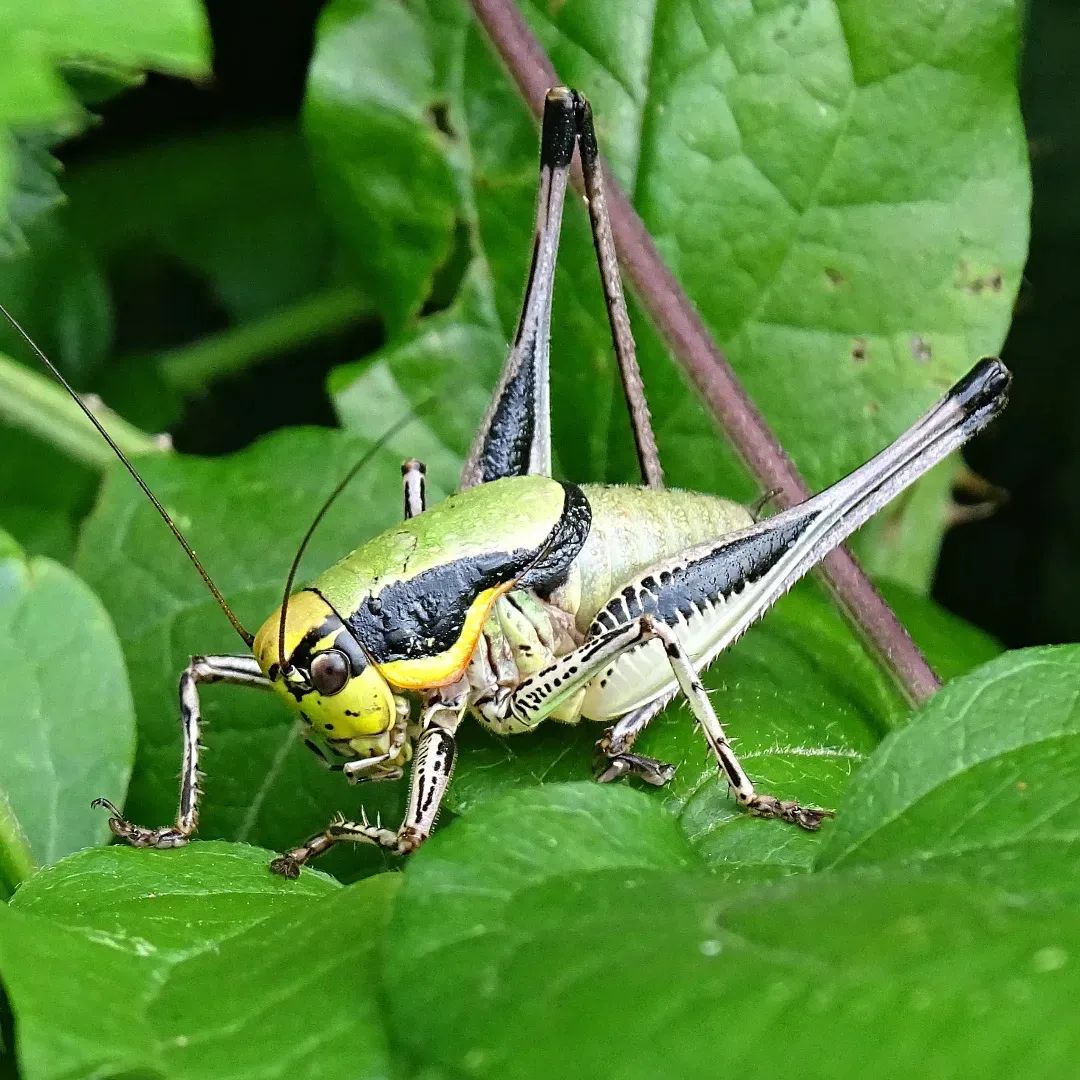
Physical Barriers:
Physical barriers are a proactive approach to preventing grasshoppers from accessing your plants. By physically blocking their entry, you can effectively protect your garden.
How to Use It:
- Row Covers: Use lightweight row covers made of materials like floating row fabric or mesh. These covers are draped over plants and secured at the edges to create a protective barrier. Ensure that the covers are adequately anchored to prevent grasshoppers from slipping underneath.
- Netting: Consider using fine mesh netting, like bird netting or insect mesh, to cover individual plants or garden beds. This prevents grasshoppers from reaching your crops.
- Fences: Erect garden fences with mesh or wire netting around your garden area. Ensure the fence extends below ground to deter grasshoppers from burrowing under it.
- Elevated Planters: If you have raised beds or container gardens, elevate them off the ground to make it more challenging for grasshoppers to access your plants.
- Regular Inspection: Periodically inspect the physical barriers for any damage or gaps, and promptly repair any breaches to maintain their effectiveness.
Companion Planting:
Companion planting involves strategically placing certain plants next to each other to benefit one or both of the species involved. In the case of deterring grasshoppers, some plants can emit scents or compounds that repel these pests.
How to Use It:
- Plant Deterrents: Include companion plants that grasshoppers find unappealing near susceptible crops. Examples of companion plants that may deter grasshoppers include:
-
- Marigolds: Their strong scent can repel grasshoppers.
- Basil: Grasshoppers often avoid basil plants.
- Calendulas: These flowers can act as a natural barrier.
- Interplant: Intermingle these companion plants among your vulnerable vegetables or ornamentals to create a protective barrier.
- Crop Rotation: Rotate your crops annually to disrupt grasshopper feeding patterns. Plant grasshopper-attractive crops in different areas each year to confuse and deter them.
- Observe and Adjust: Keep an eye on your garden and adjust your companion planting strategy as needed. If you notice grasshoppers bypassing certain areas, consider planting more deterrent plants there.
Hand-Picking:
Hand-picking, while labor-intensive, can be an effective method for reducing grasshopper populations. It involves manually removing grasshoppers from your plants.
How to Use It:
- Timing: Conduct hand-picking during the early morning or late afternoon when grasshoppers are less active.
- Inspect Thoroughly: Carefully examine your plants, including the undersides of leaves and stems, where grasshoppers often hide.
- Hand Removal: Wear gloves and gently pick the grasshoppers off the plants. Drop them into a bucket of soapy water to ensure they don’t return.
- Regular Checks: Perform regular inspections to catch grasshoppers early and prevent population explosions.
- Enlist Help: If you have family members or gardening partners, involve them in hand-picking to make the process more efficient.
- Consistency: Be persistent and consistent with hand-picking, especially during peak grasshopper activity periods.
Chemical Pesticides:
Chemical pesticides, whether synthetic or organic, are designed to kill or repel grasshoppers. While these should be a last resort due to their potential impact on the environment, they can effectively reduce grasshopper populations when used judiciously.
How to Use It:
- Identify the Right Pesticide: Choose a pesticide specifically labeled for grasshopper control. Consider organic or less harmful options to minimize environmental impact.
- Follow Instructions: Read and follow the manufacturer’s instructions carefully. This includes dosage, timing, and safety precautions.
- Application: Use a garden sprayer to evenly apply the pesticide to the affected plants. Ensure thorough coverage, especially on the foliage.
- Safety Precautions: Wear appropriate protective gear, including gloves, goggles, and a mask, when handling and applying pesticides.
- Timing: Apply pesticides when grasshoppers are actively feeding, typically in the early morning or late afternoon.
- Residual Effects: Some pesticides have residual effects that continue to protect plants for a period after application. Monitor your garden for recurring grasshopper activity and reapply as needed.
- Selective Pesticides: Whenever possible, opt for pesticides that are less harmful to beneficial insects to preserve the overall health of your garden ecosystem.
Crop Rotation:
Crop rotation is a preventive strategy that involves planting different crops in different areas of your garden each year. By disrupting the grasshoppers’ food source and breeding grounds, you can reduce the likelihood of infestations.
How to Use It:
- Plan Your Garden Layout: Divide your garden into sections or beds, and map out where each type of crop will be planted in the current and subsequent seasons.
- Rotate Crops Annually: Avoid planting the same crops in the same location for consecutive seasons. For example, if you had tomatoes in one bed this year, plant a different crop in that bed next year.
- Choose Diverse Crops: Opt for a variety of plants with different growth habits, as grasshoppers often have preferences for certain types of plants.
- Interplant Deterrents: Incorporate companion plants that grasshoppers find unattractive within your crop rotation scheme.
- Observe and Adjust: Regularly observe your garden for signs of grasshopper infestations. If you notice them targeting specific areas, adjust your crop rotation plan accordingly.
Garden Cleanliness:
Maintaining a clean and clutter-free garden can help reduce grasshopper populations by removing hiding spots and potential breeding grounds.
How to Use It:
- Remove Debris: Regularly clean up dead plant material, fallen leaves, and weeds from your garden. These can provide hiding places for grasshoppers and their eggs.
- Prune Overgrowth: Trim back overgrown plants and vegetation to reduce hiding spots for grasshoppers.
- Till Soil: If you have a vegetable garden, consider tilling the soil in the fall or early spring to disrupt grasshopper eggs in the ground.
- Reduce Moisture: Grasshoppers are attracted to moisture. Avoid overwatering your garden, as damp conditions can encourage grasshopper activity.
- Compost Carefully: Be cautious when adding grass clippings or plant debris to your compost pile, as grasshopper eggs may be present. Ensure your compost reaches high temperatures to kill any eggs.
By incorporating these methods, you can create a comprehensive strategy to manage grasshopper populations in your garden effectively. Remember to prioritize environmentally friendly and less harmful approaches before resorting to chemical pesticides.
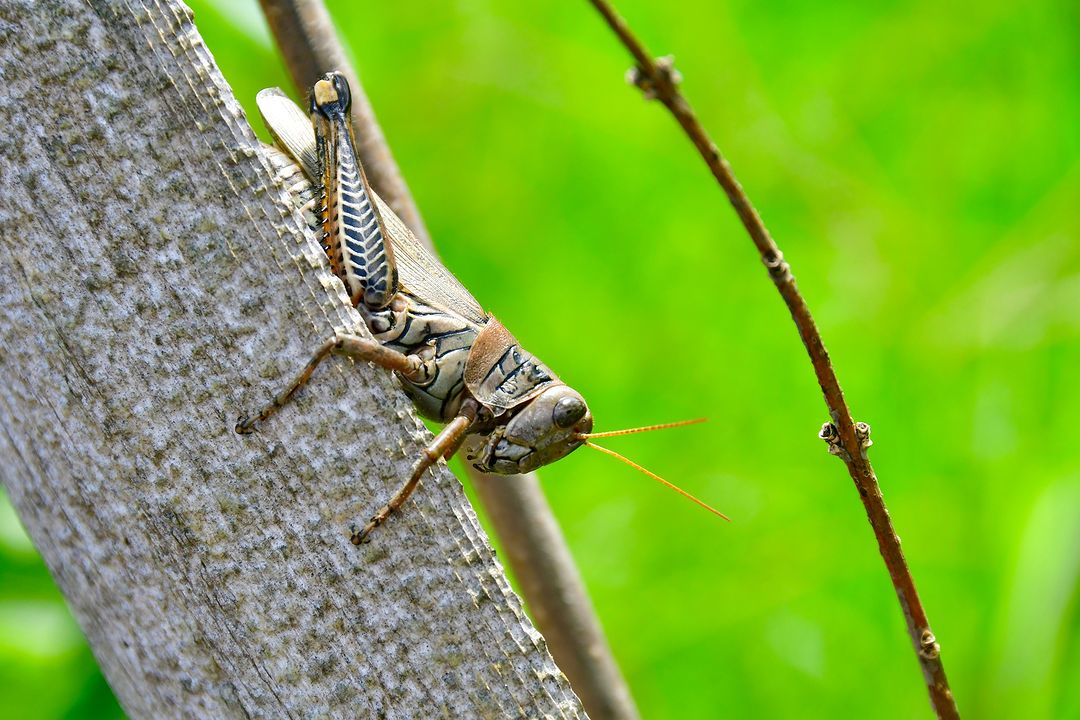
How to Prevent Grasshopper Infestations
Preventive measures are essential for keeping grasshoppers out of your garden and minimizing the need for reactive pest control. Here are several strategies to consider:
Choose Resistant Plant Varieties:
Select plant varieties that are less appealing to grasshoppers. Some plants have natural compounds or textures that deter these pests. Research and choose grasshopper-resistant varieties for your garden.
Maintain Garden Hygiene:
A clean and well-maintained garden is less inviting to grasshoppers. Regularly remove debris, fallen leaves, and weeds from your garden to eliminate hiding spots and potential breeding grounds.
Soil Health:
Healthy soil leads to healthy plants. Ensure your soil is well-balanced with proper nutrients and pH levels. Strong, healthy plants are less susceptible to grasshopper damage.
Crop Rotation:
As mentioned earlier, practice crop rotation to disrupt grasshopper feeding patterns and reduce the likelihood of infestations in the same areas year after year.
Row Covers and Netting:
Use row covers or netting to create a physical barrier between grasshoppers and your plants. This can be especially useful for protecting vulnerable crops during the grasshopper’s active season.
Garden Layout:
Consider the layout of your garden. Placing plants with deterrent properties near those that are prone to grasshopper damage can help protect your more vulnerable crops.
Birdhouses and Attracting Natural Predators:
Install birdhouses and provide water sources to attract birds that feed on grasshoppers. Additionally, creates habitats for beneficial insects and natural predators that help control grasshopper populations.
Monitor and Early Detection:
Frequent monitoring of your garden is essential. Look for early signs of grasshopper activity, such as damaged leaves, and take action promptly to prevent infestations from growing.
Companion Planting:
Strategically plant companion crops and flowers that deter grasshoppers. Marigolds, basil, and calendulas are examples of plants that grasshoppers often find unappealing.
Sound and Visual Deterrents:
Some gardeners report success with sound deterrents like wind chimes or motion-activated scare devices. Visual deterrents, like reflective objects or scarecrow-like figures, can also disrupt grasshopper feeding patterns.
Garden Fencing:
Install garden fencing with mesh or wire netting to create a physical barrier around your garden area. Make sure it extends below ground to deter grasshoppers from burrowing under it.
Healthy Ecosystem:
Promote a diverse and healthy garden ecosystem. Avoid excessive use of chemical pesticides, as they can harm beneficial insects and disrupt the balance of your garden.
Weather Monitoring:
Grasshoppers tend to thrive during warm and dry conditions. Be especially vigilant during late spring and summer when they are most active, and consider implementing preventive measures during these times.
By incorporating these preventive measures into your gardening practices, you can create an environment that is less attractive to grasshoppers and reduce the likelihood of infestations. Remember that a combination of strategies often yields the best results in managing grasshopper populations.
Conclusion
The battle against grasshoppers in your garden can be challenging, but with the right strategies and a proactive approach, you can protect your plants and enjoy a thriving garden. We’ve covered a comprehensive range of methods, from natural and eco-friendly approaches to more targeted solutions when necessary.
By understanding the signs of grasshopper infestations and knowing how to identify common species, you can detect problems early, which is key to effective control. Implementing measures such as companion planting, attracting natural predators, and creating physical barriers can significantly reduce grasshopper populations while maintaining a healthy garden ecosystem.
Remember, preventive measures are your first line of defense. By choosing resistant plant varieties, practicing good garden hygiene, and promoting soil health, you can create an environment that is less inviting to grasshoppers in the first place.
Lastly, always strive for a balanced approach. Avoid the excessive use of chemical pesticides that can harm beneficial insects and the environment. Instead, prioritize eco-friendly methods and consider chemical options only as a last resort.
With dedication and a combination of these strategies, you can reclaim your garden from grasshopper pests, ensuring a flourishing and pest-free oasis for your beloved plants.
